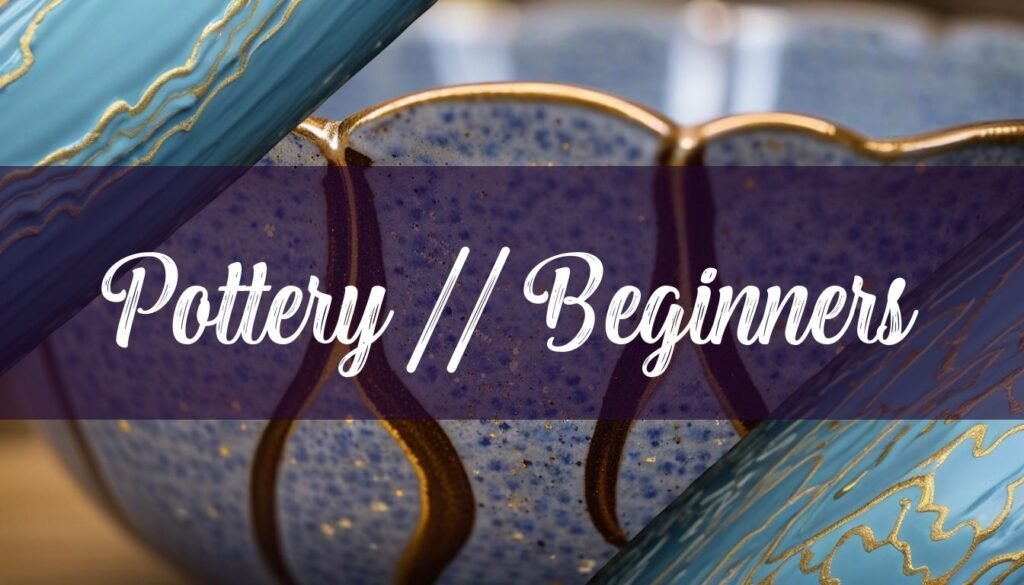Embarking on the journey of pottery making is an adventure filled with creativity, tactile exploration, and the satisfaction of crafting functional and beautiful objects from simple clay. Whether you dream of creating unique dinnerware, decorative pieces, or simply enjoy the process of working with your hands, this guide will provide you with the essential knowledge to get started in the world of pottery.
Essential Tools and Materials
To begin your pottery journey, you’ll need to gather a few essential tools and materials. The most fundamental of these is clay. There are several types of clay available, each with its own unique properties and firing requirements. Earthenware clay is a popular choice for beginners due to its workability and vibrant color potential, firing at lower temperatures, typically between 950°C and 1,100°C (1,745°F and 2,012°F). Stoneware clay, known for its durability and versatility, fires at higher temperatures, ranging from 1000°C to 1380°C, making it suitable for functional items. Porcelain clay, prized for its delicate appearance and translucence, requires advanced skills due to its challenging workability and high firing temperatures. Other types include ball clay, often used in blends to enhance workability, fire clay, known for its ability to endure extremely high temperatures, and air-dry clay, which hardens naturally without firing.
For shaping the clay, a pottery wheel is a valuable investment, allowing you to create symmetrical forms like bowls and mugs. However, many beautiful pieces can also be made without a wheel, using hand-building techniques. Essential hand-building tools include wooden modeling tools, metal ribs, loop tools, sponges, and wire cutters for shaping, smoothing, and removing clay. You’ll also need an apron to protect your clothing, a wedging table for preparing the clay, and a banding wheel for rotating pieces while decorating. Finally, a kiln is necessary for firing your pottery, transforming the raw clay into durable ceramic pieces. Electric kilns are a popular choice for their ease of use, while gas and wood-burning kilns offer unique atmospheric effects. To ensure your kiln lasts for years to come, learn about kiln care 101.
Fundamental Pottery Techniques
Before you can create your own pottery, it’s important to master some fundamental techniques. Wedging is the first step, involving kneading the clay to remove air pockets and create a uniform consistency. This ensures that your piece will not explode during firing. If you’re using a pottery wheel, centering the clay is crucial. This involves manipulating the clay on the spinning wheel to create a stable, centered mound from which you can begin to form your piece.
Hand-building techniques offer a range of possibilities for creating pottery without a wheel. Pinching is the simplest method, involving creating a small pot by pinching the clay between your fingers and thumb. Coiling involves rolling out long coils of clay and layering them on top of each other to build up the walls of your piece. Slab building involves rolling out flat sheets of clay and joining them together to create geometric forms. Each of these techniques allows for unique forms and creative expression. Be sure to try pottery carving for some creative texture.
Creating Simple Pottery Pieces
With your tools and techniques in hand, you can start creating simple pottery pieces. A basic bowl can be made using the pinching or coiling method. Start with a ball of clay and use your thumb to create an indentation in the center. Then, pinch the clay between your fingers and thumb, rotating the ball as you go, to create the walls of the bowl. Alternatively, roll out coils of clay and layer them on top of each other, blending the coils together to form the bowl. For a mug, you can use the slab building method. Roll out a slab of clay and cut out a rectangle. Wrap the rectangle around a cylindrical form to create the body of the mug, and then attach a handle made from a coil or slab of clay.
When creating pottery, it’s important to keep the clay moist to prevent cracking. Use a sponge or spray bottle to keep the clay hydrated as you work. If cracks do appear, you can smooth them out with your fingers or a modeling tool. Remember that practice makes perfect, and don’t be discouraged by wobbles or imperfections. These can often add character to your pieces.
Firing and Glazing Basics
Once your pottery piece is formed and dry, it’s time for firing. The firing process transforms the soft clay into a hard, durable ceramic. The first firing, called bisque firing, removes all of the water from the clay and vitrifies it to a point where it can accept glaze. After bisque firing, you can apply glaze to your piece. Glaze is a coating of glass-like material that adds color, decoration, and waterproofing to your pottery. There are many different types of glazes available, each with its own unique properties and firing requirements.
Glazes can be applied using various techniques, including dipping, brushing, spraying, and pouring. Dipping is a simple method for covering the entire piece, while brushing allows for more controlled application. Once the glaze is dry, the piece is fired again, this time to a higher temperature, which melts the glaze and bonds it to the clay. Always follow the manufacturer’s instructions for firing temperatures and safety precautions. When working with a kiln, ensure proper ventilation and wear appropriate safety gear.
Exploring Decorative Techniques
Once you are comfortable with basic pottery techniques, you can start experimenting with decorative surface treatments to enhance the aesthetics of your pieces. There are numerous ways to decorate pottery, from carving and stamping to painting and glazing. Carving involves cutting designs into the clay surface, while stamping uses textured objects to create patterns. Painting with underglazes allows you to add intricate designs and colorful imagery. Glazing techniques like wax resist, glaze trailing, and sgraffito offer endless possibilities for creating unique and visually appealing surfaces.
Glaze dripping and pouring can be used to create decorative details, while stippling and sponging add texture. Experiment with different combinations of techniques to discover your own unique style. Pottery offers a vast playground for artistic expression, and the possibilities are truly endless.
Pottery is a rewarding and fulfilling craft that allows you to create beautiful and functional objects from simple materials. By mastering the basic techniques, exploring different materials, and experimenting with decorative surface treatments, you can unlock your creative potential and create pottery pieces that reflect your unique style and vision. Remember to prioritize safety, seek out resources for further learning, and embrace the joy of the creative process.





